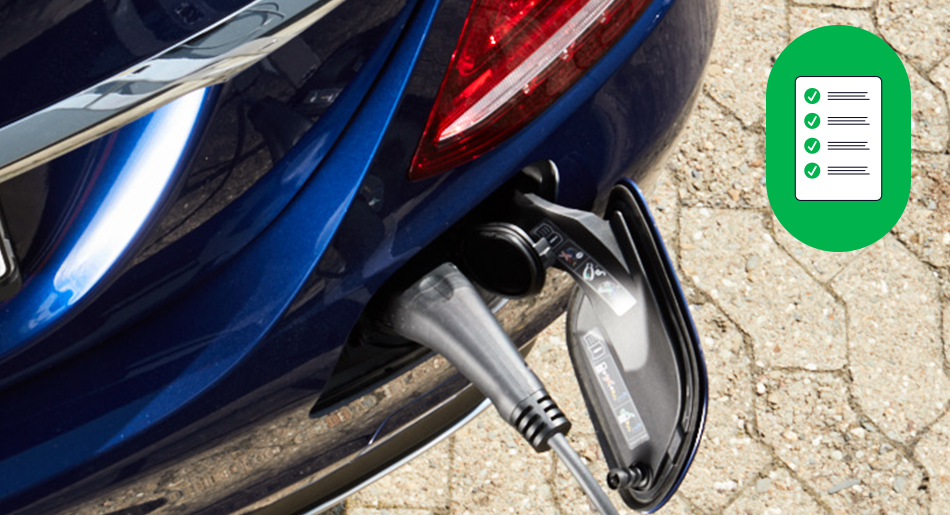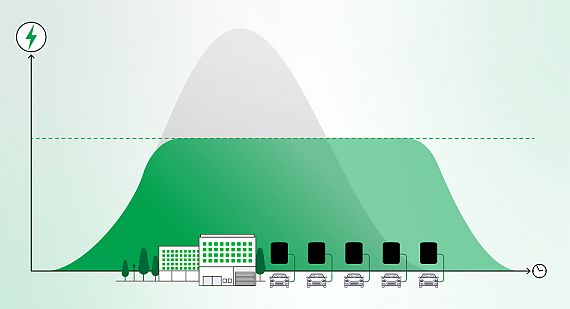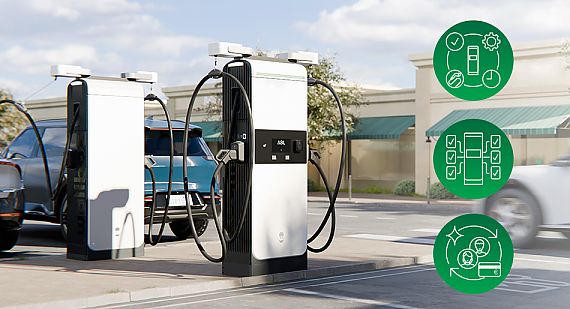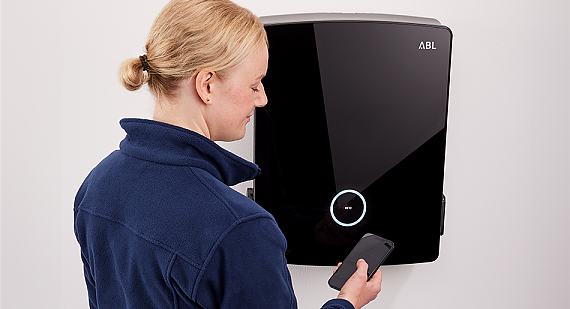
Checklist for the installation of a charging station
5 Steps to Install a Charging Station
1. Power supply
The Wallbox or charging station must be connected to a dedicated power supply. Please ensure that no other appliances such as wall sockets, washing machines, lights etc. are connected to it. It is important to note the so-called coincidence factor for charging stations. The coincidence factor takes into account that not all devices in a system are always operated simultaneously and at full power, which is assumed for a charging station. For charging stations, a coincidence factor of 1.0 applies. This means that 100% of the charging station's rated input power must be made available.
2. Power supply cable dimensions
The power supply cable must be tailored to the desired charging output. It is recommended to use cables with a cross section of at least 2.5 mm² for a charging current of 16 A and higher in order to avoid cable fires. In order to charge an electric car with a charging output of 11-22 kW (three-phase power), the power supply cable must have 5 conductors. It is best to have a competent electrical contractor determine the cable cross-section, as this depends on factors such as voltage drop, ambient temperature, cable length and installation type.
Since electric cars will have higher charging and battery capacities in the future, it is advisable to prepare for a three-phase supply now in order to be equipped accordingly.
3. Residual current device (RCD) installation
When installing your charging station, you will need a residual current device that protects against electric shock. It must have the same power rating as your electric car.
How does a residual current device work?
A residual current circuit breaker (RCCB) compares the flows of electrical current to / from the electric car. If the currents no longer match, the RCCB trips and interrupts the circuit. Sometimes, such residual current circuit breakers are already integrated into the charging station - if this is not the case, an external RCCB must be connected. Because a coincidence factor of 1.0 applies in this case, the circuit is protected separately.
Which types of residual current circuit breakers exist?
Each charging station must have a Type A RCCB. This type of switch is a standard circuit breaker and commonly used electrical hardware component. It only detects certain fault currents. Sometimes, smooth DC residual currents occur during charging. If the normal, standard circuit breaker is unable to detect these, a DC residual current device must be installed. There are several options for this:
DC fault current sensor / detection:
To protect from DC fault currents, more and more charging station manufacturers are choosing to install DC fault current sensors. In addition, a Type A RCCB is required. Even if charging stations with built-in fault current sensor are slightly more expensive, the total cost is much cheaper because you save on the cost of installation.
A Type A EV RCCB is the best option if DC fault current protection is not already integrated into the charging station. This switch is the cheaper alternative to a Type B RCCB and was specially developed for the requirements of the electric vehicle sector, i.e. it also responds to smooth DC residual currents.
Type B RCCBs detect all types of AC and DC residual currents, making them ideal for use in charging station installations.
4. The circuit breaker (CB)
This protective device, also called CB, protects the conductor from overload by currents that are too strong, and must correspond to the EV's charging capacity. But there is a drawback: Type B RCCBs are very expensive.
Why do I need a circuit breaker?
If too much current flows through the conductor, the circuit breaker (CB) – also called 'overcurrent protection device', ensures that the circuit is interrupted. This prevents damage caused by electrical conductors heating up. As with the RCCB, an additional circuit breaker is required for the charging station's circuit.
Which is the right circuit breaker?
* The C tripping characteristic is recommended by most manufacturers
* The CB must be matched to the rated current, in this case to the desired charging output. As we are dealing here with a potentially hazardous device, installation should definitely be carried out by a competent electrical contractor. Only experts know the existing standards and installation requirements to be complied with.
* The rated current is the current consumed by an electrical device. The rated current of the selected circuit breaker must not be less than that indicated on the rating plate of the charging station.
5. Authorization by the grid operator
If you would like to purchase a charging station with a charging power over 12 kW, it is necessary to obtain a permit from your grid operator - either in person or through your electrician.
Because an electric car with a charging power of 12 kW draws an extremely large amount of power from the power grid at the one time, the grid operator must be informed to avoid power failures. The authorization process differs from grid operator to grid operator.



